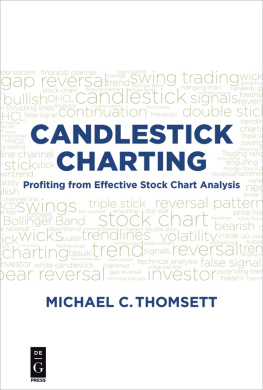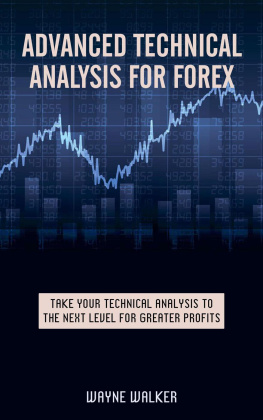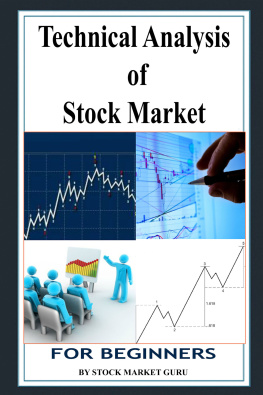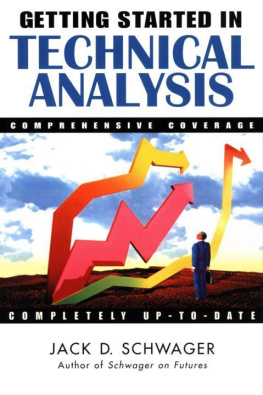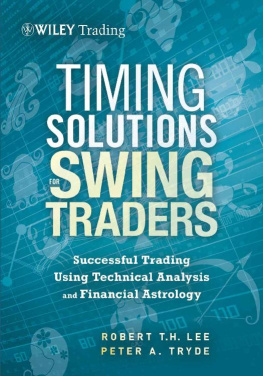INTEGRATING TECHNICAL ANALYSIS FOR THE INVESTOR
BC Low
Chartered Market Technician
Technical Analysis Consultancy
SINGAPORE
Published By:
Technical Analysis Consultancy
www.taconsultancy.biz
Singapore
Ebook Edition 2014
ISBN: 978-981-09-1128-7
Copyright 2014 Technical Analysis Consultancy.
All rights reserved. No part of this publication may be reproduced or transmitted in any form or any means electronic or mechanical, without the written permission by the copyright owners or publisher.
While great care was taken in the preparation of this book, the author and publisher disclaim any legal responsibility for any errors or omissions, and they disclaim any liability for losses or damages incurred through the use of the information in this book.
This publication is for informational purposes only and does not constitute as a recommendation or solicitation of investment advice regardless of the form of your action. In no event shall the author or publisher be liable to any party for any damages, losses, expenses or cost whatsoever arising in any manner with the use of this book, or reliance on any information, materials provided at this book.
Dedicated to Connie,
Shi Ping & Shi Min
Acknowledgements
My wife, Connie Lim for her support and encouragement for me in writing this book. I am also thankful to Connie for reviewing this books content.
Ms Low Shi-Ping for editing the book, in making it more readable to the average reader.
Mr Lye Ming-Chye for his consistent help as webmaster and in all IT matters relating to Technical Analysis Consultancy including the publishing of this book.
Charts in this book are plotted with charting software, Metastock which I have had the privilege of using for many years.
CONTENTS
FOREWORD
Although technical analysis has fascinated and inspired me for close to thirty years, it is not as widely accepted in the investor community. While I can understand why that is so, it is my hope that this book will change some attitudes towards technical analysis by showing how it can help the investor in the important investment decisions. I hope that the ideas in this book will help investors get more out of their investor dollars.
Many books on technical analysis have been written with the professional trader in mind. These books often deal with complex topics which maybe beyond the interest of the average investor. Other books adopt an encyclopaedia approach which maybe too much for the average investor whose needs are less.
I believe the average investor seeks to learn key aspects of technical analysis to to satisfy three important needs firstly to identify a markets trend, secondly to identify reliable timing signals to enter and exit a position; and thirdly, to identify the price levels to enter and exit a position This book is written with these needs in mind.
However, this book is not intended to provide a Black Box to for investors to plug into. It will show how several public domain technical analysis tools can be better interpreted and integrated to help the investor. It begins with the authors personal interpretations of technical indicators familiar to many, namely moving averages, Bollinger Bands, Fibonacci Ratios, Stochastics, Moving Average Convergence Divergence, selected price patterns and candlestick patterns. The approach is not to provide an exhaustive discussion of these techniques, since there are many other titles already in print to focus on each of the techniques covered. Rather it is to emphasize aspects of these techniques which when integrated and used together, will help the investor to combine the knowledge of a markets trend with the timing and price levels to enter and exit a position.
The investor is not a trader. His concern is for the longer term and making returns from taking positions over the long run. Over the years, I have paid special attention to the issue of using technical analysis for the longer term. As such, I will share my original technique of Time Frames, developed in the 1990s.
This book shares with investors the tools of technical analysis that I have used in the past 20 plus years. It draws on materials that have been used to educate a generation of students who studied technical analysis with me as part of a fulltime course in a Singapore college.
To those who already have some understanding of technical analysis, this book can add focus on integration, as well as the use of technical analysis for long term investment. To investors just starting out, I hope it will provide a strong framework so that technical analysis can be used to make investing a more profitable and enriching experience. Overall, I do hope this book will make a real difference to investors.
CHAPTER 1 - INTRODUCTION
Technical analysis is for the Investor too!
Technical analysis is the art and science that uses charting tools to tell us a markets trend, the timing and price levels to enter and exit the market. My approach in technical analysis focuses on integrating these three aspects trend, price and timing using a combination of the most effective tools in each area based on my observation and use of technical analysis. To me it is not enough to just know the various indicators individually, but integrating them to achieve better results.
Technical Analysis is about Probability
As in other methods of forecasting, technical analysis is about improving the probability of getting the market right. There is no certainty that a technical indicator will deliver sure-win results since markets do not conform completely to any fixed pattern for too long beyond rising and falling. But with so much progress made in technical analysis, the probability of getting it right can be higher. Investors should be able to depend on it than on gut feel or hearsay.
On the other hand, no matter how good technical tools become, one can never be certain of an indicator being correct all the time. In addition, there is the element of judgment in interpreting technical signals such that two persons using the exact same indicator at one time may hold opposing views! There is the element of subjectivity.
Technical vs Fundamental Analysis
Both technical and fundamental approaches use different types of information to arrive at a view. Technical analysis is based on signals from indicators which apply to price closing price alone or high, low and closing prices of each trading period. The advantage of the technical approach is that when a technical indicator is applied to different markets, it produces similar signals. There is economy of effort in that once an investor knows how a particular indicator works, he can use it in practically all markets.
Fundamental analysis uses supply and demand information within a market, which may be peculiar to that market. A great deal of information and research is needed to secure the relevant and key market information to provide the view. And the effort has to be repeated for each market.
For them to be effective, both technical and fundamental analyses involve a lot of effort. But in my view, one should aspire to excel in one of the two approaches because when practised well, either one is capable of delivering results.
Where does technical analysis work best?
Technical analysis works best when the market is large and no one player or group of players has the means to influence its price for a considerable period of time. If a market is small and can be easily influenced, then technical analysis becomes less effective. This is true in all markets - currencies, commodities and stocks, indices, etc.
With the explosive growth in technical analysis tools in recent years due to application of IT, technical analysis has become complex and involves multiple indicators. This adds sophistication but can also lead users of technical analysis to experience difficulty in practising the art the so-called analysis paralysis.
Next page



